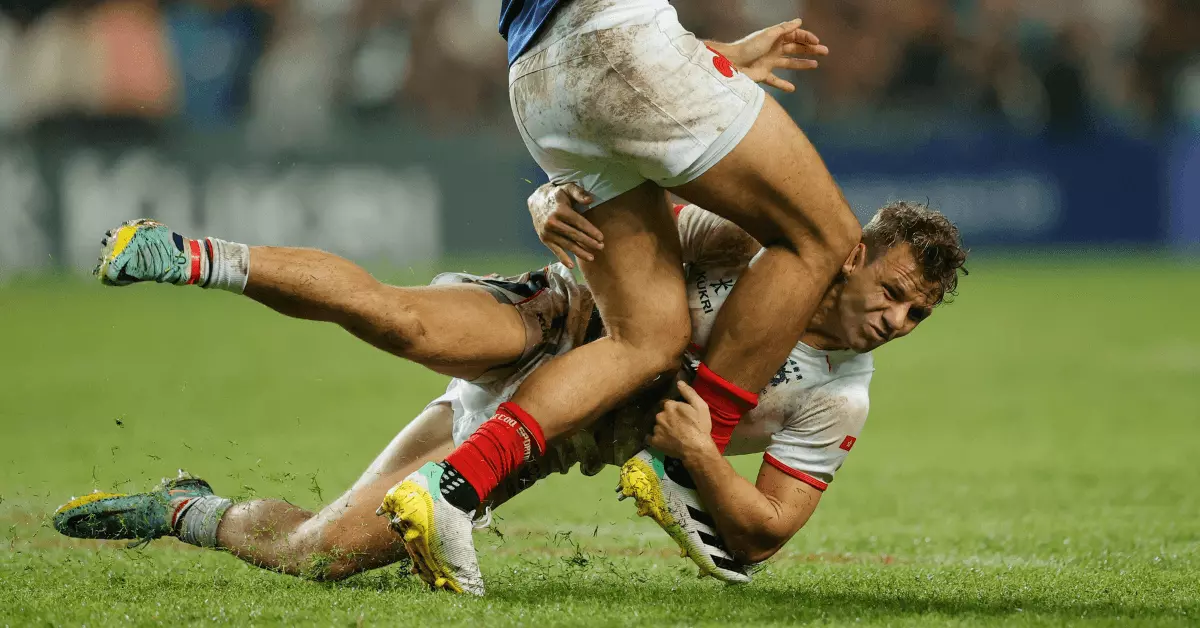Get ready to kick off winter with 7 Bamboos RFC!…

The Role of Recovery in Rugby: Strategies for Maximizing Rest and Regeneration
As one of the most physically demanding sports in the world, rugby takes a significant toll on players’ bodies. From intense tackles to high-impact collisions, rugby players must be in peak physical condition to withstand the rigors of the game.
But with such a high demand on their bodies, it’s equally important for rugby players to prioritize recovery in order to maintain their performance and avoid injury. In this blog post, we’ll explore the role of recovery in rugby and provide strategies for maximizing rest and regeneration.
The Importance of Recovery for Rugby Players
First and foremost, it’s important to understand the physical demands of rugby and the toll it takes on players’ bodies.
Rugby is a full-contact sport that requires strength, speed, agility, and endurance. Players are constantly pushing their bodies to the limit, both in training and during games.
As a result, they experience a range of physical and mental stresses that can impact their performance and health.

This is where recovery comes in. Recovery is the process of allowing the body to rest and regenerate after physical activity.
It’s an essential part of any training routine, as it allows the body to repair and rebuild muscle tissue, reduce inflammation, and restore energy levels.
Recovery is particularly important for rugby players, as it can help prevent injuries, reduce fatigue, and improve overall performance on the field.
So, what are some of the specific benefits of recovery for rugby players? Let’s take a closer look:
– Injury prevention: Rugby is a high-risk sport for injuries, with common injuries including sprains, strains, and fractures. By prioritizing recovery, rugby players can reduce their risk of injury by allowing their bodies to heal and regenerate between training sessions and games.
– Improved performance: When the body is properly rested and recovered, it’s able to perform at a higher level. Recovery can help increase strength, speed, and agility while reducing fatigue and improving mental focus.
– Reduced inflammation: Rugby players are at risk of inflammation due to the high-impact nature of the sport. By using recovery strategies such as rest, ice, and compression, players can reduce inflammation and speed up the healing process.
– Reduced muscle soreness: Rugby players often experience muscle soreness and tightness after training or games. By incorporating stretching, foam rolling, and massage into their recovery routine, players can reduce muscle soreness and improve their range of motion.
Strategies for Optimizing Recovery
Now that we understand the importance of recovery for rugby players, let’s explore some specific strategies for optimizing recovery:
Rest: Rest is one of the most important aspects of recovery. It’s essential for allowing the body to heal and regenerate after physical activity.
Rugby players should aim to get 7-9 hours of sleep per night, and should also incorporate rest days into their training routine.
Hydration: Hydration is key for recovery, as it helps flush out toxins and reduce inflammation. Rugby players should aim to drink at least 8 glasses of water per day and should also consider incorporating electrolyte-rich sports drinks into their routine.
Nutrition: Nutrition is also critical for recovery. Rugby players should aim to eat a balanced diet with plenty of protein, complex carbohydrates, and healthy fats.
They should also consider incorporating supplements such as protein powder and omega-3 fatty acids into their routine.

Stretching and Foam Rolling: Stretching and foam rolling are both effective techniques for reducing muscle soreness and improving range of motion.
Rugby players should aim to stretch and foam roll before and after training sessions and games.
Massage: Massage is another effective technique for reducing muscle soreness and improving recovery.
Rugby players should consider incorporating regular massages into their routine, either from a professional massage therapist or using self-massage techniques such as a foam roller or massage ball.
Sleep: As mentioned earlier, sleep is an essential component of recovery. Rugby players should aim to get 7-9 hours of sleep per night to allow their bodies to fully regenerate.
Techniques for Managing Fatigue
In addition to these recovery strategies, there are also techniques for managing fatigue that can help rugby players perform at their best.
Fatigue can come in many forms, including physical fatigue and mental fatigue. Here are some techniques for managing fatigue:
Scheduling rest days: Rest days are crucial for allowing the body to recover from physical fatigue. Rugby players should aim to take at least one rest day per week to allow their bodies to heal and regenerate.
Taking naps: Naps can be an effective way to manage both physical and mental fatigue. A 20–30-minute nap can help improve mental clarity and alertness, while longer naps can help reduce physical fatigue.
Meditation and Visualisation: Meditation and visualization techniques can help reduce mental fatigue by promoting relaxation and mental focus. Rugby players can incorporate these techniques into their recovery routine to manage stress and improve mental clarity.

Recovery Plans for Rugby Teams
Finally, it’s important for rugby teams to have a comprehensive recovery plan in place. This can help ensure that all players are prioritizing recovery and following best practices for rest and regeneration. Here are some elements of a good recovery plan:
– Recovery sessions: Rugby teams should schedule regular recovery sessions, such as stretching or massage sessions, to promote rest and regeneration.
– Recovery resources: Teams should provide resources such as foam rollers, massage balls, and ice packs to help players recover more effectively.
– Recovery education: Teams should educate players on the importance of recovery and provide guidance on best practices for rest and regeneration.
– Recovery monitoring: Teams should monitor players’ recovery to ensure they are following the recovery plan and adjusting as needed.
Conclusion
In conclusion, recovery is an essential component of any rugby player’s training routine. By prioritizing rest and regeneration, rugby players can improve their performance, reduce their risk of injury, and perform at their best on the field.
Whether it’s through rest, hydration, nutrition, stretching, or massage, there are many effective strategies for optimizing recovery in rugby. By incorporating these strategies into their routine, rugby players can ensure they are giving their bodies the best possible chance for success.
For more articles about health and fitness click here.





